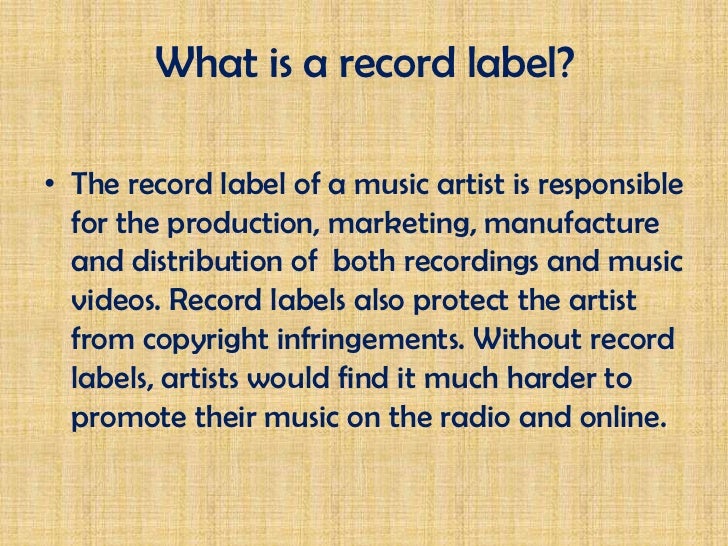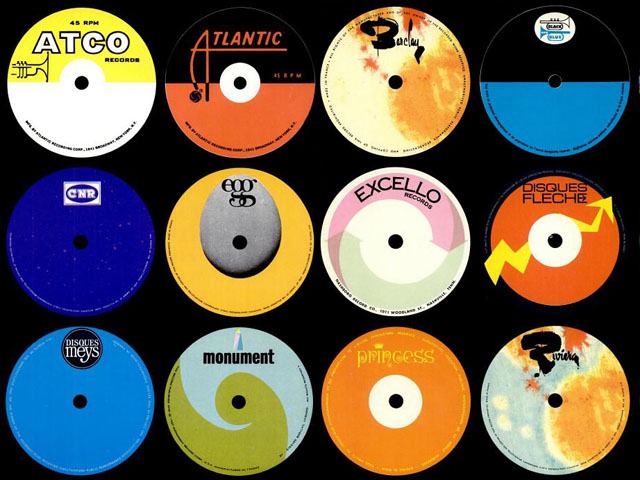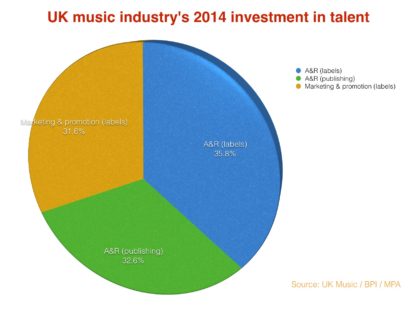44 by 1960 the major recording labels were marketing
Blue Note Records: Complete Guide To The Blue Note Labels Mar 02, 2012 · The sale of Blue Note to the giant Liberty Records in mid-1966 marked the end of an era. The vital task of record pressing moved overnight from Plastylite NJ, who had pressed all Blue Notes to date, initially to Liberty’s newly acquired pressing plant All Disc Records, Roselle NJ, and later to other plants including Research Craft, LA on the West Coast, and elsewhere. Music Industry History 1960s - Playlist Research - By the end of the 1960s the top major labels were CBS, Warner Brothers, RCA Victor, Capitol-EMI, PolyGram and MCA. The most successful independent label of the decade was Tamla/Motown. Herb Alpert was another successful independent owner who started AM Records with Jerry Moss in 1962. MCA became a big player in the sixties by purchasing Decca.
Record labels in the U.S. - Statistics & Facts | Statista Nov 23, 2021. The role of the record company is to nurture, promote, and distribute music around the world, and with global music industry revenues rebounding to 23.1 billion U.S. dollars in 2020 ...

By 1960 the major recording labels were marketing
(PDF) The Marketing Book, Sixth Edition - Academia.edu The Marketing Book, Sixth Edition. Msriraj Sriraj. Download Download PDF. Full PDF Package Download Full PDF Package. This Paper. A short summary of this paper. 10 Full PDFs related to this paper. Read Paper. Download Download PDF. The Major Labels - Everything You Need To Know About Major Record Labels Playlisting Brands Owned by The Major Labels The major labels aggressively market their music to protect their market share. One tactic that has been vital to the major labels in the past few years has been playlist promotion. All of the major labels have their own Spotify playlist submission and curation strategies. MUSC131 Flashcards | Quizlet By 1960, the major recording labels were marketing: Maturing audiences. ... In the 1960s, this group, more than any other music group, made rock the dominant pop music format that transcended age and demographic: The Beatles. The last album recorded by the Beatles was: abbey road.
By 1960 the major recording labels were marketing. Record label - Wikipedia Major versus independent record labels. Record labels may be small, localized and "independent" ("indie"), or they may be part of a large international media group, or somewhere in between.The Association of Independent Music (AIM) defines a 'major' as "a multinational company which (together with the companies in its group) has more than 5% of the world market(s) for the sale of records or ... The Independent Record Labels of the 1950's and 1960's The Independent Record Labels of the 1950's and 1960's. Throughout the 1950's and 1960's, a wave of new musical movements by independent record labels and new artists emerged in the United States. ... major labels such as Columbia, Capitol, and RCA were "reluctant to sign these acts; thus, sprung forth the independent label" (Jacobs). Record Labels 1960 - Deacon Street "Theme From a Summer Place" was the universally recognized top record of 1960 and was the main reason for Columbia's claiming the number two spot in label popularity. "Everybody's Somebody's Fool" was Connie Francis's first number one for MGM -- she would have her second later in the year with "My Heart Has A Mind Of Its Own." In the early 1960s, the major labels tried to regain the rock and roll ... In the early 1960s, the major labels tried to regain the rock and roll market by: Creating rock and roll-themed consumer products Creating new labels - 14980962 genrowland8206 genrowland8206 03/02/2020 History High School answered • expert verified
› 7588139 › The_Marketing_Book(PDF) The Marketing Book, Sixth Edition - Academia.edu Enter the email address you signed up with and we'll email you a reset link. en.wikipedia.org › wiki › Reprise_RecordsReprise Records - Wikipedia This is the reason why recordings of early Reprise artists (Dean Martin, Jimi Hendrix, the Kinks, etc.) are (in most cases) currently distributed through other labels. In Martin's case, his Reprise recordings were out of print for nearly 20 years before a deal was struck with Capitol Records. Reprise continued to reissue the Sinatra catalog ... Reprise Records - Wikipedia Reprise Records is an American record label founded in 1960 by Frank Sinatra.It is owned by Warner Music Group, and operates through Warner Records, one of its flagship labels.. Artists currently signed to Reprise Records include Enya, Michael Bublé, Eric Clapton, Stevie Nicks, Neil Young, Deftones, Mastodon, Lindsey Buckingham, Josh Groban, Disturbed, Idina Menzel, … The Independent Record Labels of the 1950's and 1960's Eric Eller. Throughout the 1950's and 1960's, a wave of new musical movements by independent record labels and new artists emerged in the United States. This movement is captured in the stories of those label creators and owners, and in the turbulent journey through their successes and failures. The first emergence was fueled by multiple ...
londonjazzcollector.wordpress.com › record-labelsBlue Note Records: Complete Guide To The Blue Note Labels Mar 02, 2012 · The sale of Blue Note to the giant Liberty Records in mid-1966 marked the end of an era. The vital task of record pressing moved overnight from Plastylite NJ, who had pressed all Blue Notes to date, initially to Liberty’s newly acquired pressing plant All Disc Records, Roselle NJ, and later to other plants including Research Craft, LA on the West Coast, and elsewhere. The Rise and Fall of Record Labels - Claremont Colleges Many more record labels entered the scene in the 1950s but eventually the record labels began to merge and consolidate to form a few corporate giants. The 1960s were a decade of consolidation in the recorded music industry. Due to economies of scale and the large-scale distribution needed to truly commercialize the Music 131: Final Exam Flashcards | Quizlet -influenced jazz musicians more than anyone else during 1960s-leader in the rise of free jazz-popularized soprano sax. Mars. by John Coltrane. ... -3 soloists who were stylistically diff. during song --> Eric Dolphy solo used free jazz approach. ... -created record label Watt Records w/ trumpeter Michael Mantler Major Pop Record Labels: The Big Three - LiveAbout The major labels today are all three media conglomerates that operate a number of specific label imprints, or the actual company logo stamped on the recording. Consolidations brought the number of major labels down from six in 1999 to three today. Major labels account for about 70 percent of music sales by recent estimates. 01 of 03
en.wikipedia.org › wiki › MotownMotown - Wikipedia Motown Records is an American record label owned by the Universal Music Group.It was founded by Berry Gordy Jr. as Tamla Records on June 7, 1958, and incorporated as Motown Record Corporation on April 14, 1960.
Record collectors: Hollywood record labels in the 1950s and 1960s ... In short, by surveying contemporary trade magazine reportage, it outlines Hollywood's intervention into the recording industry in the 1950s. It also argues that by the mid-1960s, as the market for rock music expanded, corporate links between studios and record labels instructed Hollywood on how to successfully address the youth audience.
› topic › MotownMotown | History, Style, Artists, Songs, & Facts | Britannica Motown, in full Motown Record Corporation, also called Hitsville, recording company founded by Berry Gordy, Jr., in Detroit, Michigan, U.S., in January 1959 that became one of the most successful Black-owned businesses and one of the most influential independent record companies in American history. The company gave its name to the hugely popular style of soul music that it created. Moving ...
6.4 Current Popular Trends in the Music Industry Between 1950 and 1980, a large number of major record labels and numerous independent labels competed for a share of the musical pie. Gradually, the larger labels began buying up the independent labels, and then started trying to purchase each other. By the late 1990s, only six major labels remained: Warner, Universal, Sony, BMG, EMI, and Polygram.
EOF
The Independent Record Labels of the 1950's and 1960's Atlantic went on to become a "powerhouse" in the 1960's, signing such mainstream artists as Sonny and Cher. It was successful enough to also branch off into other sub-labels like Atco. From 1960-1968, Atlantic, spear-headed by Jerry Wexler, had a distribution deal with the Memphis record company that became Stax records (Jacobs).
Category:Record labels established in 1960 - Wikipedia Categories: Record labels established in the 1960s. Entertainment companies established in 1960. Mass media companies established in 1960. 1960 in music. Record labels by year of establishment. Hidden categories: Navseasoncats year and decade.
The Independent Record Labels of the 1950's and 1960's 4437 Words. 18 Pages. Open Document. The Independent Record Labels of the 1950's and 1960's History of Music Production Eric Eller Throughout the 1950's and 1960's, a wave of new musical movements by independent record labels and new artists emerged in the United States. This movement is captured in the stories of those label creators ...
Motown | History, Style, Artists, Songs, & Facts | Britannica Motown, in full Motown Record Corporation, also called Hitsville, recording company founded by Berry Gordy, Jr., in Detroit, Michigan, U.S., in January 1959 that became one of the most successful Black-owned businesses and one of the most influential independent record companies in American history. The company gave its name to the hugely popular style of soul …
Motown - Wikipedia Motown Records is an American record label owned by the Universal Music Group.It was founded by Berry Gordy Jr. as Tamla Records on June 7, 1958, and incorporated as Motown Record Corporation on April 14, 1960. Its name, a portmanteau of motor and town, has become a nickname for Detroit, where the label was originally headquartered.. Motown played an …








Post a Comment for "44 by 1960 the major recording labels were marketing"